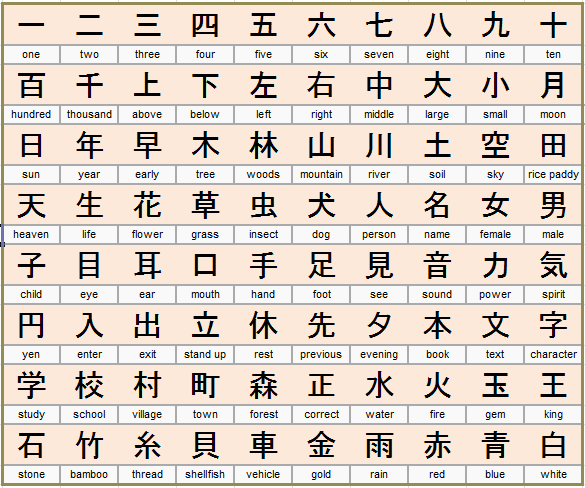Kanji? What is it?
- Andrew Guon
- Feb 24, 2019
- 2 min read

Japanese writing is made up of three scripts. Hiragana, which is used for native Japanese words, has 46 basic characters and about 50 more combination characters. That's almost 4 times more than the English Alphabet's 26 letters.
Thankfully, Katakana, which is used for non-Japanese words, is phonetically equivalent. You just write it differently with a few exceptions here and there. Certainly, it's a challenge to adjust to so many characters, but frankly, even casually studying, the two scripts or Kana as it's collectively called, can be learned in a month or less. Kanji on the other hand, oh boy.
Kanji are basically Chinese characters that the Japanese borrowed for their writing system sometime during Ancient Japan. Though they are visually the same, the Japanese have more than one pronunciation for each Kanji.
Usually, there are two types of readings which are called onyomi and kunyomi.
The Chinese way and the Japanese way, respectively.
Originally, the characters would have usually one reading or pronunciation (In Chinese), but in Japanese, there could be one or two or three or four or five or more for each. That just sounds awful. There's often only one common reading each though. Still, it really is dependent on context. Writing them doesn't make it any easier to learn either.
Some basic kanji are simple such as the kanji for "soil" or 土. Easy, yeah?
Well here's the word for "sea" or 海.
You might not be even able to see all the intricate details on the screen.
Yep, kanji is hard to write and read. Kanji is also disproportionately used. For being one of three scripts, Kanji is going to be something like 2/3 or 3/4 of what one sees in writing. So don't think one can just skip learning Kanji. Even if one knew Kana back to front like their hand, it would give them maybe 10% of literacy. To be fully literate one needs Kana and about 2200 Kanji. 100 letters sounds like a cake compared to 2200.
To be fair, it does get easier. There are patterns to the script, however, and many kanji are repeated.
For Example:
Kanji for Day/Sun - 日
Kanji for Temple - 寺
Combined, they make up the Kanji for "time" or 時
After about a couple of weeks of consistent study, I now know about 200 kanji or about 5 % of the 2200 I need to know. Considering that it takes actual Japanese students about 10 years to learn, I think my rate of learning is fairly good.
It's frustrating and daunting at times, but I do enjoy learning the script. It's quite unique from Latin letters and I find it fascinating and aesthetically pleasing. I like them enough to take the challenge of learning them.
As I advance in my studies of the Japanese language, I hope to reach a level where I can tell people that their Chinese-based characters probably don't mean what they think they mean.









































